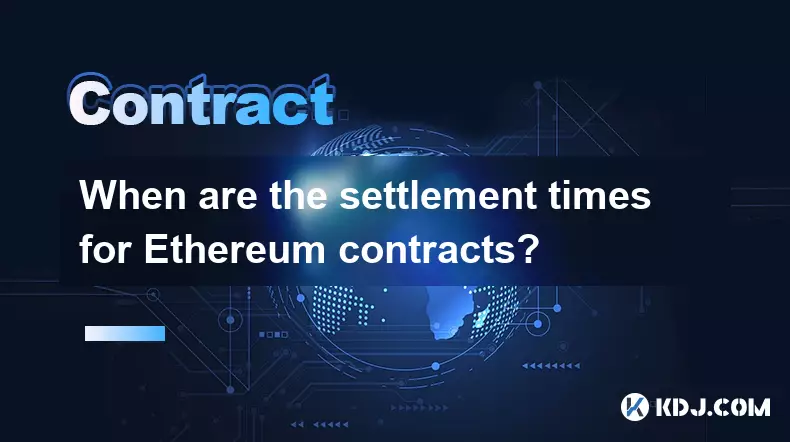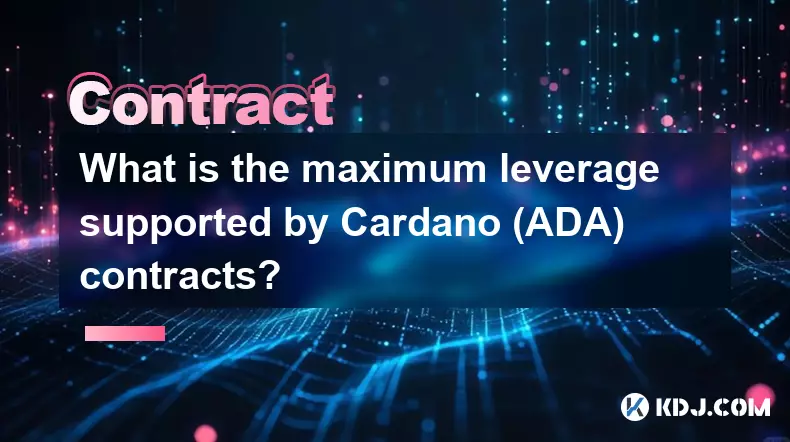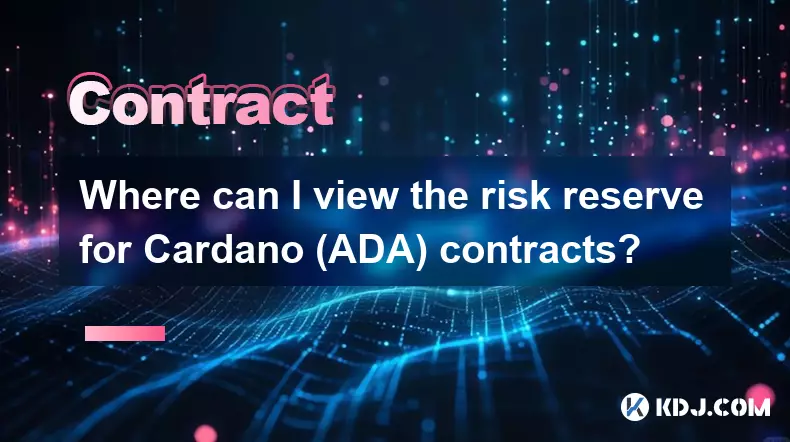-
 bitcoin
bitcoin $112195.049338 USD
2.42% -
 ethereum
ethereum $4124.915858 USD
2.81% -
 tether
tether $1.000570 USD
0.02% -
 xrp
xrp $2.861568 USD
2.25% -
 bnb
bnb $1000.346670 USD
3.04% -
 solana
solana $209.070819 USD
3.38% -
 usd-coin
usd-coin $0.999870 USD
0.02% -
 dogecoin
dogecoin $0.235379 USD
2.65% -
 tron
tron $0.335681 USD
-0.20% -
 cardano
cardano $0.803501 USD
3.38% -
 hyperliquid
hyperliquid $47.120881 USD
3.56% -
 chainlink
chainlink $21.501300 USD
3.44% -
 ethena-usde
ethena-usde $1.000571 USD
0.02% -
 avalanche
avalanche $29.793378 USD
3.62% -
 stellar
stellar $0.366964 USD
2.42%
When are the settlement times for Ethereum contracts?
Ethereum contract settlements typically finalize within seconds to minutes, depending on gas fees and network congestion, with Layer 2 solutions offering faster exits subject to challenge periods.
Sep 29, 2025 at 11:00 am

Understanding Ethereum Contract Settlement Times
1. Ethereum contract settlements occur as soon as a transaction is included in a block and confirmed on the blockchain. Unlike traditional financial systems that operate on fixed business hours, Ethereum runs 24/7, enabling transactions to be processed at any time. The actual settlement time depends largely on network congestion and the gas fee attached to the transaction.
2. Blocks on the Ethereum network are produced approximately every 12 seconds. This means that under normal conditions, a transaction can be confirmed within seconds to a few minutes. However, during periods of high demand—such as during NFT mints or major market movements—thousands of transactions may compete for limited block space.
3. Users can influence settlement speed by adjusting the gas price they are willing to pay. Transactions with higher gas fees are prioritized by miners or validators and are more likely to be included in the next available block. Wallets like MetaMask provide dynamic fee estimation tools to help users choose appropriate levels: slow, standard, or fast.
4. Once a transaction is confirmed and written into a block, it achieves finality probabilistically. While one confirmation may suffice for low-value interactions, exchanges and services often require multiple confirmations—typically between 12 and 30 blocks—to reduce the risk of reorgs or chain reversions.
5. Layer 2 solutions such as Optimism, Arbitrum, and zkSync have introduced faster and cheaper settlement layers that batch transactions off-chain before settling back to Ethereum’s mainnet. These networks offer near-instant user experiences while maintaining Ethereum’s security, though final withdrawals to Layer 1 may involve a delay of several hours due to fraud proof windows or challenge periods.
Factors Influencing Confirmation Speed
1. Network congestion plays a pivotal role in determining how quickly a contract execution settles. When decentralized applications experience surges in activity, the mempool fills up, causing delays for transactions with lower gas prices.
2. The complexity of the smart contract function being called affects execution cost and time. Functions that modify large amounts of state data or interact with multiple contracts require more computational resources, increasing the likelihood of higher gas consumption and longer processing times.
3. Wallet settings and user behavior directly impact settlement efficiency. Choosing automatic gas settings might lead to delays during peak times, whereas manually setting competitive gas prices ensures faster inclusion.
4. Miner extractable value (MEV) bots constantly scan the mempool for profitable opportunities, sometimes bundling or reordering transactions. This can result in certain transactions being skipped or delayed if they do not present economic incentive to validators.
5. Transaction nonce management is critical. If a user submits multiple transactions out of order or fails to update the nonce correctly, pending transactions can stall indefinitely until resolved, creating the illusion of slow settlement when the issue lies in user error.
Layer 1 vs Layer 2 Settlement Dynamics
1. On Ethereum’s Layer 1, settlement is bound by block intervals and consensus rules. Every transaction must pass through the Ethereum Virtual Machine (EVM), be validated by nodes, and be secured by Proof-of-Stake mechanics since the Merge upgrade.
2. Layer 2 platforms process transactions off the main chain and post cryptographic proofs or compressed data back to Ethereum. While user-facing actions settle quickly on L2s, the ultimate security guarantee comes from L1 finality, which introduces a time lag for asset bridging.
3. Rollups differ in their settlement models: optimistic rollups use a seven-day challenge period (on most implementations) before funds can exit to L1, whereas zero-knowledge rollups can finalize almost immediately once the validity proof is accepted on-chain.
4. Bridging assets from Layer 2 back to Layer 1 is not instantaneous. Users must account for this delay when planning arbitrage, trading, or withdrawal strategies across ecosystems. Some bridges now offer fast liquidity options at a premium fee.
5. Monitoring tools like Etherscan, Arbiscan, or Optimistic Explorer allow users to track transaction status across both layers, providing transparency into where a given contract interaction stands in the settlement pipeline.
Frequently Asked Questions
What determines how long an Ethereum smart contract execution takes?The duration depends on network congestion, gas price offered, complexity of the contract function, and current load on validator nodes. High-priority fees typically get processed within one block (~12 seconds), while low-fee transactions may wait minutes or even hours.
Can a contract transaction fail after being sent?Yes. Transactions can revert due to insufficient gas, incorrect parameters, or internal contract logic errors. Even if included in a block, a reverted transaction consumes gas but does not alter the intended state change.
How many confirmations are needed for a secure Ethereum contract settlement?For most purposes, 12 confirmations (about 2–3 minutes) are considered secure. Exchanges and custodial services may require more, especially for large transfers, to mitigate risks associated with rare chain reorganizations.
Do all Ethereum-based tokens settle at the same speed?All ERC-standard tokens operate on the same underlying infrastructure, so base settlement timing is identical. However, differences arise when using different networks—tokens on Polygon or BNB Chain follow their respective consensus timelines, separate from Ethereum mainnet.
Disclaimer:info@kdj.com
The information provided is not trading advice. kdj.com does not assume any responsibility for any investments made based on the information provided in this article. Cryptocurrencies are highly volatile and it is highly recommended that you invest with caution after thorough research!
If you believe that the content used on this website infringes your copyright, please contact us immediately (info@kdj.com) and we will delete it promptly.
- Solana at $197: Hunting for High-ROI Tokens in the Crypto Jungle
- 2025-09-30 03:05:17
- Mike Novogratz's XRP U-Turn: From Underestimated to Undeniable
- 2025-09-30 03:05:17
- SANDchain, Token Launchpads, and the Sandbox: Riding the Web3 Wave
- 2025-09-30 03:18:35
- Axl Rose's Graphic Novel: Can He Save Humanity From Paradise City?
- 2025-09-30 02:45:11
- Predictive Oncology's Bold Leap: AI, Digital Assets, and a Treasury Strategy Revolution
- 2025-09-30 03:18:35
- Axl Rose's 'Appetite for Destruction' Gets a Graphic Novel Makeover!
- 2025-09-30 02:45:11
Related knowledge

What is the maximum leverage supported by Cardano (ADA) contracts?
Sep 30,2025 at 03:37am
Understanding Leverage in ADA Derivatives Trading1. Leverage in cryptocurrency futures and perpetual contracts allows traders to control larger positi...

How do I use the scheduled order feature in Cardano (ADA) contracts?
Sep 28,2025 at 10:18pm
Understanding Scheduled Orders in Cardano Smart ContractsCardano operates on a proof-of-stakes consensus mechanism and uses the Plutus scripting langu...

Where can I view the risk reserve for Cardano (ADA) contracts?
Sep 29,2025 at 09:19pm
Risk Reserve Overview in Cardano (ADA) Ecosystem1. The concept of a risk reserve within the Cardano blockchain does not align with traditional central...

How do I enable the "scalping-only" mode for Cardano (ADA) contracts?
Sep 24,2025 at 03:19am
Understanding Scalping Strategies in Crypto Derivatives1. Scalping in cryptocurrency trading refers to executing multiple short-term trades within min...

What is the settlement time for Cardano (ADA) contracts?
Sep 28,2025 at 04:18am
Understanding Cardano's Contract Settlement Mechanism1. Cardano operates on a proof-of-stake consensus model known as Ouroboros, which fundamentally i...

How do I add margin to Cardano (ADA) contracts?
Sep 27,2025 at 07:54pm
Understanding Margin in Cardano (ADA) Smart ContractsCardano operates on a proof-of-stake blockchain that supports smart contracts through its Plutus ...

What is the maximum leverage supported by Cardano (ADA) contracts?
Sep 30,2025 at 03:37am
Understanding Leverage in ADA Derivatives Trading1. Leverage in cryptocurrency futures and perpetual contracts allows traders to control larger positi...

How do I use the scheduled order feature in Cardano (ADA) contracts?
Sep 28,2025 at 10:18pm
Understanding Scheduled Orders in Cardano Smart ContractsCardano operates on a proof-of-stakes consensus mechanism and uses the Plutus scripting langu...

Where can I view the risk reserve for Cardano (ADA) contracts?
Sep 29,2025 at 09:19pm
Risk Reserve Overview in Cardano (ADA) Ecosystem1. The concept of a risk reserve within the Cardano blockchain does not align with traditional central...

How do I enable the "scalping-only" mode for Cardano (ADA) contracts?
Sep 24,2025 at 03:19am
Understanding Scalping Strategies in Crypto Derivatives1. Scalping in cryptocurrency trading refers to executing multiple short-term trades within min...

What is the settlement time for Cardano (ADA) contracts?
Sep 28,2025 at 04:18am
Understanding Cardano's Contract Settlement Mechanism1. Cardano operates on a proof-of-stake consensus model known as Ouroboros, which fundamentally i...

How do I add margin to Cardano (ADA) contracts?
Sep 27,2025 at 07:54pm
Understanding Margin in Cardano (ADA) Smart ContractsCardano operates on a proof-of-stake blockchain that supports smart contracts through its Plutus ...
See all articles


























![[Pycoin] PI Coin -Shocking Listance of Pycoin?! 'Rebellion' This time ... Pay attention to #paikoin [Pycoin] PI Coin -Shocking Listance of Pycoin?! 'Rebellion' This time ... Pay attention to #paikoin](/uploads/2025/09/29/cryptocurrencies-news/videos/pycoin-pi-coin-shocking-listance-pycoin-rebellion-time-pay-attention-paikoin/68da82f23cec1_image_500_375.webp)















































